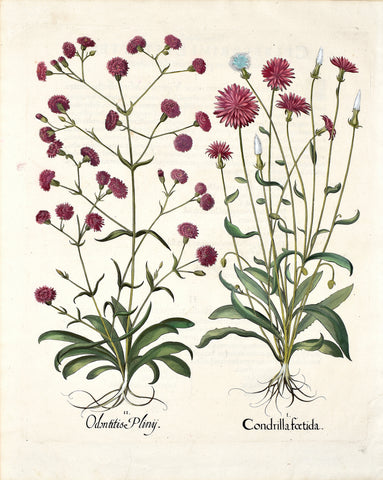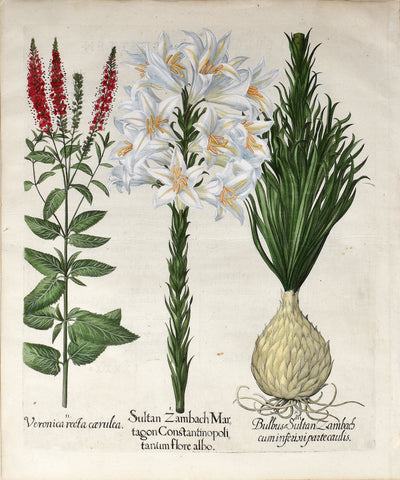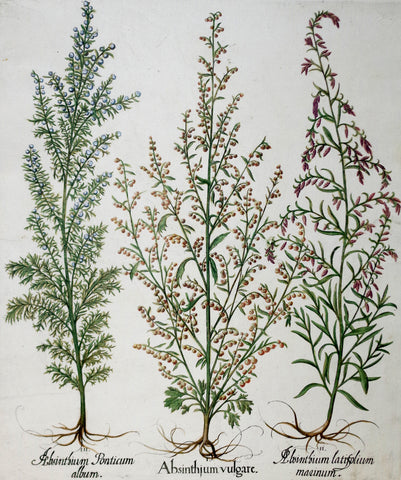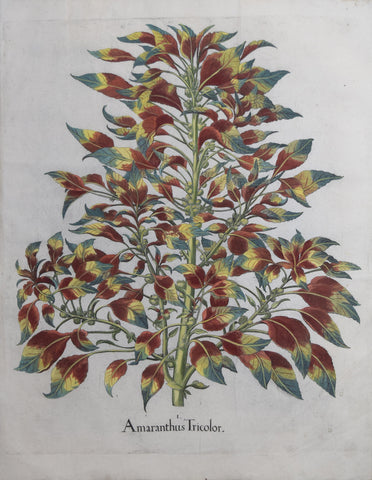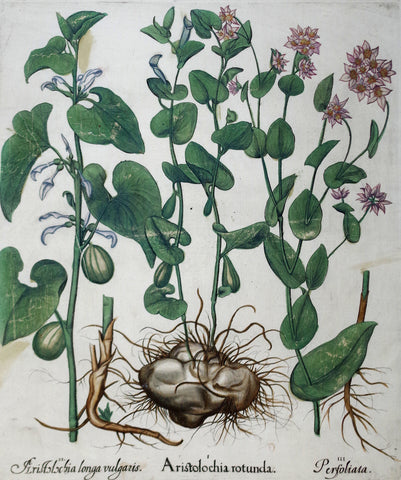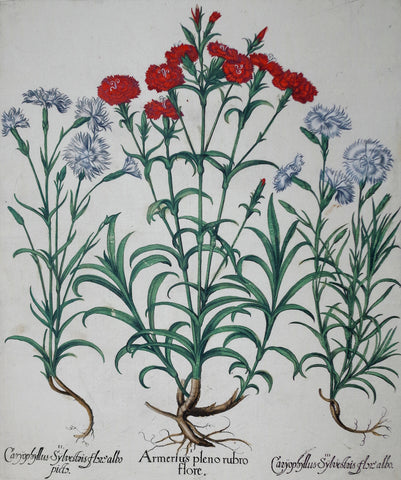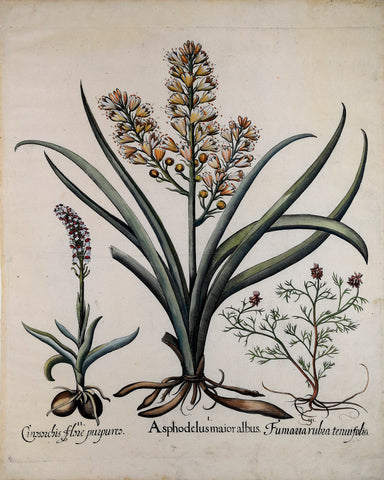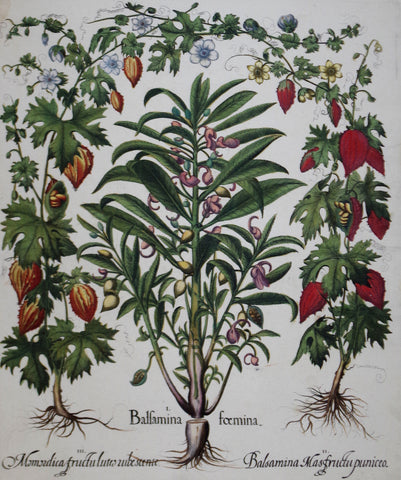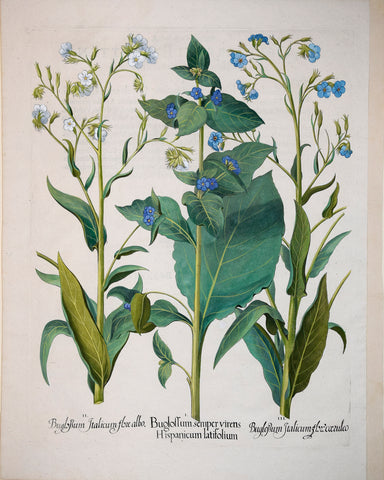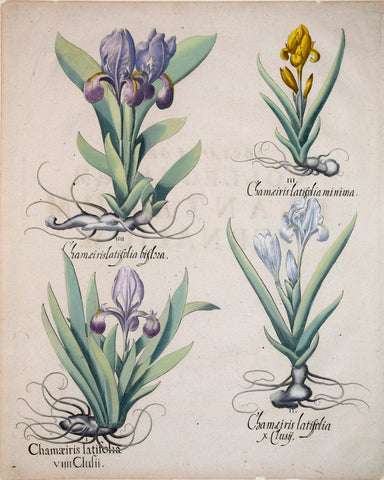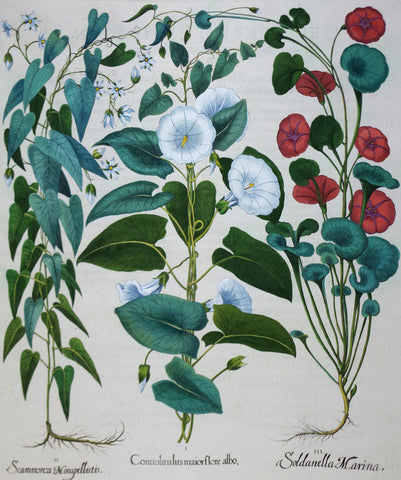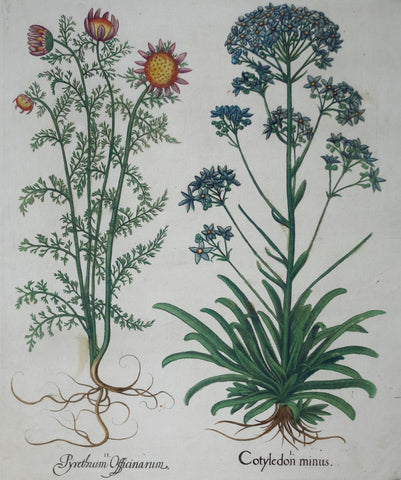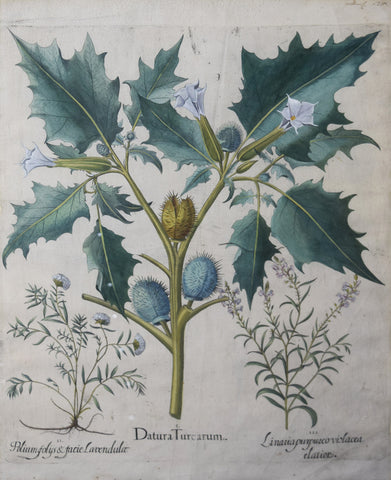Search By Artist
Basilius Besler (1561-1629)
A selection from Hortus Eystettensis
Engravings with hand-coloring.
Eichstatt, 1613.
Basil Besler's great botanical work is a landmark of botanical documentation and pre-Linnaean classification, as well as one of the most splendidly stylized and aesthetically powerful botanical works ever produced. Besler was an apothecary and botanist who managed the gardens of Bishop Johann Conrad in Eichstatt, Germany. The Bishop's remarkable garden was one of the most extensive in Europe, containing a huge variety of European shrubs and flowering plants, as well as exotic specimens from Asia and the Americas. Besler used this encyclopedic resource as the basis for the "Hortus Eystettensis," in which he studied and depicted over a thousand flowers, representing 667 species in all. With the Bishop's patronage, he worked both as artist and publisher, directing a team of ten artists and engravers in creating 374 plates over 16 years.
Published one hundred and fifty years before Linnaeus created his thorough system of classification, Besler's great florilegium represents an impressive early attempt to classify plants for the benefit of botanists, doctors and apothecaries. Each plant is given a distinct and often descriptive Latin title, and related species are grouped together on the same plate, or over a series of plates. Almost all specimens are shown complete and accurately colored, including delineations of their root systems. While Besler's work is obviously motivated by a scientific impulse to document and describe a remarkable collection of species, the beautiful presentation and dramatic stylization of the illustrations also convey a sense of the visual grandeur of the Bishop's great garden. Each specimen is placed on the page with an artist's understanding of formal and spatial relations. Most notably, the stylized depiction of foliage and root systems betrays a lively baroque sensibility, as the plants seem to dance across the page.
Engravings with hand-coloring.
Eichstatt, 1613.
Basil Besler's great botanical work is a landmark of botanical documentation and pre-Linnaean classification, as well as one of the most splendidly stylized and aesthetically powerful botanical works ever produced. Besler was an apothecary and botanist who managed the gardens of Bishop Johann Conrad in Eichstatt, Germany. The Bishop's remarkable garden was one of the most extensive in Europe, containing a huge variety of European shrubs and flowering plants, as well as exotic specimens from Asia and the Americas. Besler used this encyclopedic resource as the basis for the "Hortus Eystettensis," in which he studied and depicted over a thousand flowers, representing 667 species in all. With the Bishop's patronage, he worked both as artist and publisher, directing a team of ten artists and engravers in creating 374 plates over 16 years.
Published one hundred and fifty years before Linnaeus created his thorough system of classification, Besler's great florilegium represents an impressive early attempt to classify plants for the benefit of botanists, doctors and apothecaries. Each plant is given a distinct and often descriptive Latin title, and related species are grouped together on the same plate, or over a series of plates. Almost all specimens are shown complete and accurately colored, including delineations of their root systems. While Besler's work is obviously motivated by a scientific impulse to document and describe a remarkable collection of species, the beautiful presentation and dramatic stylization of the illustrations also convey a sense of the visual grandeur of the Bishop's great garden. Each specimen is placed on the page with an artist's understanding of formal and spatial relations. Most notably, the stylized depiction of foliage and root systems betrays a lively baroque sensibility, as the plants seem to dance across the page.


